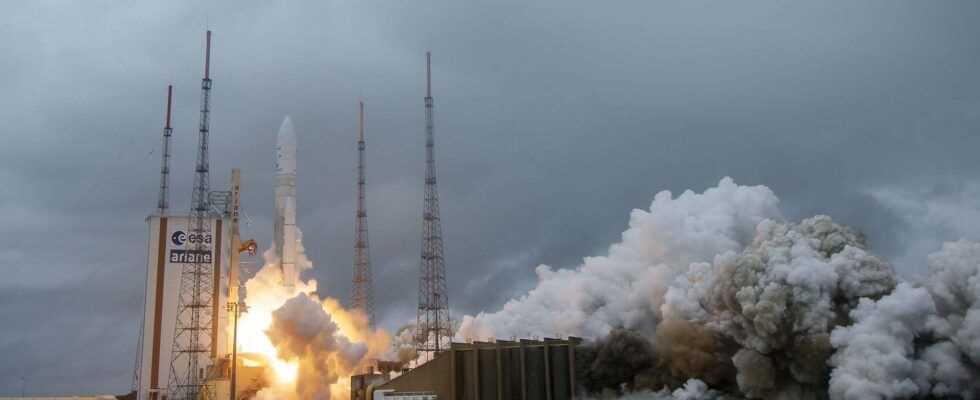NASA provides a page that allows you to indicate where the James Webb Space Telescope is in relation to its destination.
You may not have known it: Saturday, December 25, the Ariane 5 rocket launched from the Guyanese spaceport, with the James Webb telescope on board. But the journey of the new observatory has only just begun: it will take a good month before it reaches its destination. Until then, it is possible to follow his journey in space.
Where is James Webb in space?
The American space agency indeed offers a dedicated web page containing a frieze allowing to embrace at a glance all the distance that James Webb must cross, from the Earth to a specific place in space, which is called Lagrange point L2 of the Earth-Sun system. This is precisely 1.5 million kilometers from Earth.
The page is fascinating to watch, as it is updated in real time, with counters showing the mileage from Earth, which remains to be covered up to the point of Lagrange L2, speed of movement in space, time since launch, and percentage of distance that has already been completed. James Webb is already beyond the moon.
It is also on this page that you can find the main sequences of the space observatory’s journey: during the first two days, there were the initial post-take-off maneuvers, allowing course corrections to be made. A was thus carried out from December 26, the day after the Ariane 5 rocket took off.
In the very short term, there will be the deployment of the thermal shield, which aims to protect the observation instruments from sunlight (the temperature difference is spectacular: on the side exposed to the Sun, the temperature will reach 125 ° C, against -235 ° C on the other side). Later there will be the deployment of the secondary mirror (on the 10th day), the primary mirror (12th), segmented mirrors (15th).
Given the extreme distance that there will be between James Webb and Earth, the observatory will never be seen again – it will not be possible to send a maintenance crew to fix it. The only possible interventions will be at the software level, pushing fixes or sending instructions that adjust the operation or positioning of the telescope.
Once the first month has passed and once the telescope is well positioned at its point of arrival, the machine will enter a long alignment phase which should last for months: it is planned to turn it in the direction of a bright star and to maintain its aim between the second and the fifth month. Then comes the time to calibrate the instruments, for a month.
It is only after these first six months that the deployment will be completed. The scientific part of the mission can really start, especially in the infrared. Astronomers will finally be able to discover the capabilities of the telescope, which is more extensive than those of Hubble, thanks in particular to the size of its huge mirror, whose design and geometry are quite innovative.

